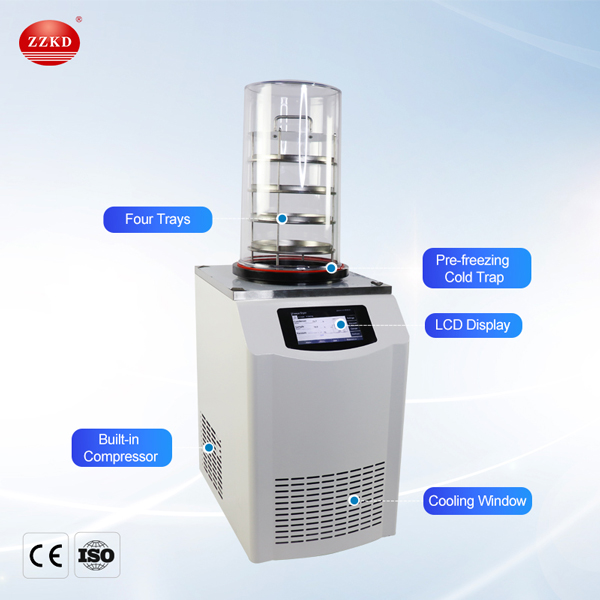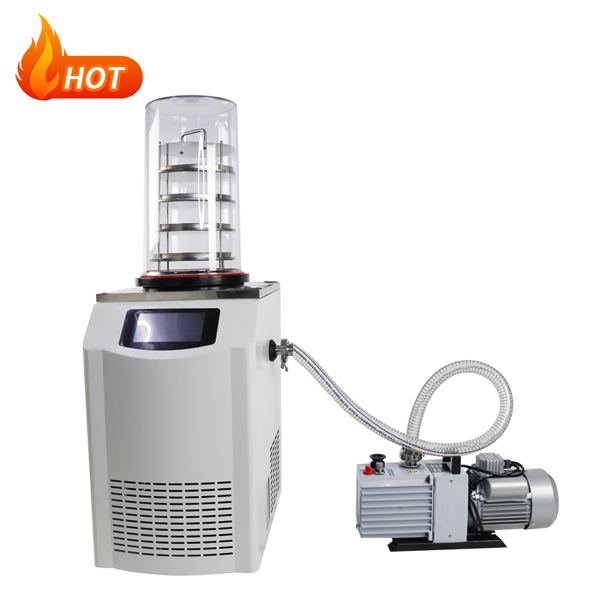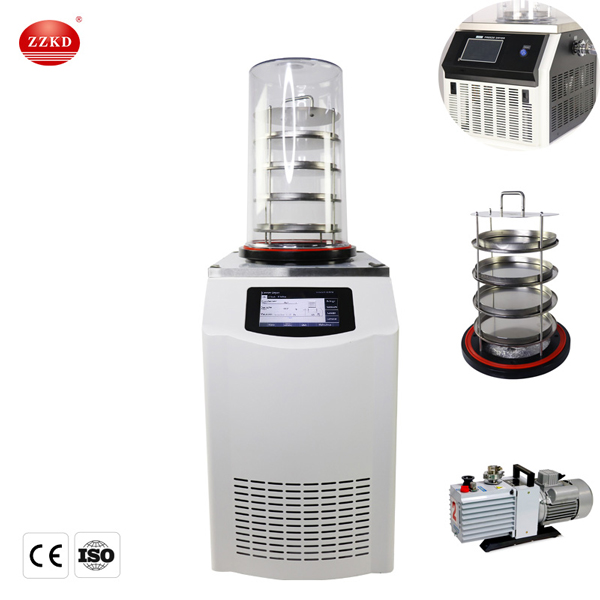Laboratory Freeze Dryer
Freeze drying is a drying technique that uses the principle of sublimation. It is a process in which the dried material is quickly frozen at a low temperature, and then in a suitable vacuum environment, the frozen water molecules are directly sublimated into water vapor and escape. The product obtained by freeze-drying is called freeze-dried product, and the process is called freeze-drying. ZZKD is a professional manufacturer of freeze dryers in China. We sell Freeze Dryer KD-12N Freeze Dryer and KD-12ND Freeze Dryer. Widely used in home, laboratory, industry and other places.

The use of laboratory freeze dryer:
Freeze-drying technology is of great significance in the field of food engineering, and is usually used for drying food, such as noodles, pasta, fruits, vegetables, shrimp, meat and fish. The above-mentioned foods are perishable and difficult to be preserved as fresh foods, while dried foods have the advantages of easy storage, low transportation costs, and low packaging costs, and the low water content not only inhibits the decomposition of microorganisms, but also delays the rate at which food spoils.
Laboratory freeze dryers are widely used in the production of pharmaceuticals based on unstable drugs. Pharmaceutical companies often use freeze-drying technology to extend the shelf life of products, such as vaccines and other injections, by removing moisture from the product and storing the product in a vial, which facilitates storage, transportation, and later reconstitution of the product for use injection. Taking antineoplastic drugs as an example, freeze-drying is an effective method to produce stable antineoplastic drugs. The design of antineoplastic drugs is a complex and multifaceted problem, which must consider the biological and pharmacological activities of drugs, physicochemical properties and production techniques of dosage forms. Most antineoplastic drugs are thermally unstable and easily hydrolyzed. Therefore, when designing new formulations, it is necessary to develop the most stable dosage form.

The operation steps of the laboratory freeze dryer:
The application of freeze-drying process in food engineering and pharmaceutical industry is roughly the same, usually divided into three stages: freezing stage; primary drying stage; re-drying stage.
1. The freezing stage is the first step of freeze drying. In the field of pharmaceutical and food engineering, water is the target of the freezing stage. The freezing step turns the water into ice, which separates it from the other solute components. Typically, the freezing process takes only a few hours to complete. During this process, discontinuous temperature changes are observed, a phenomenon known as "supercooling". The occurrence of supercooling is usually related to the rate of freezing.
2. The primary drying stage is also called the sublimation drying stage. When the chamber pressure drops below the equilibrium vapor pressure of ice, the temperature of the material rack increases gradually, and the heat generated is transferred from the surface of the material rack to the sample. The ice in the sample is sublimated by heat transfer, and then the sublimated vapor is transferred to the condenser and converted into ice again, thus, the heat lost by the sublimation of the sample will be transferred to the sample again through the material rack for subsequent sublimation process. The primary drying stage takes the longest time among the three freeze-drying stages. At present, there are a lot of researches on optimizing and shortening the time of the primary drying stage.

3. The re-drying stage is a stage in which the temperature of the sample is raised, and the temperature in this stage is higher than that in the primary drying stage. Part of the water in the sample did not turn into ice during the freezing stage, but was captured by solute components as non-freezing water. During this process, residual moisture will diffuse and desorb in the sample. The purpose of re-drying is to reduce the final residual moisture in the sample to an acceptable level. Although this stage usually only takes a few hours, residual moisture will make the sample quality worse, so this stage is an indispensable step in the freeze-drying process.


